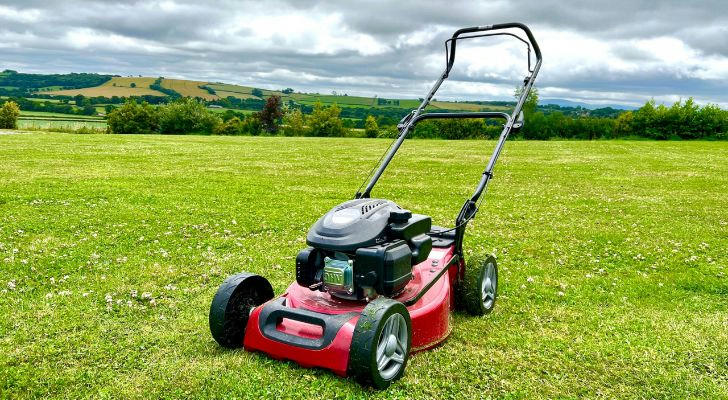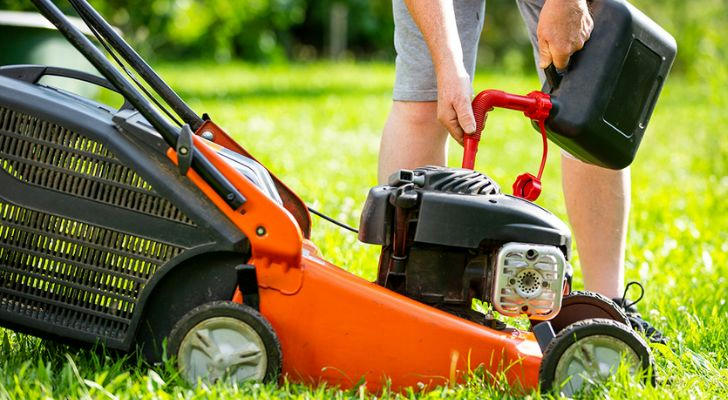The Mighty Mower: Everything You Didn’t Know About Lawnmowers (But Should)
A lawnmower might look like a simple piece of backyard equipment, but don’t be fooled. It’s a machine that changed modern landscaping forever. From keeping suburban lawns neat to clearing fields for fire safety, this humble tool packs more power — and science — than most realize.This guide dives into the world of lawnmowers: their history, how they work, which type suits which job, and the one mistake that shortens the life of nearly every mower on the market.

What Is a Lawnmower?
At its core, a lawnmower is a device that uses one or more blades to cut grass to an even height. Most people know the walk-behind kind — but the variety is astonishing.
From robotic mowers that glide across lawns automatically, to ride-on monsters with cupholders and Bluetooth speakers, the evolution of this tool is wild.
But the core job hasn’t changed: cutting grass efficiently, evenly, and consistently.
A (Very) Brief History of the Lawnmower
The first mechanical lawnmower was invented in 1830 by Edwin Beard Budding in England. He was inspired by a cloth-trimming machine in a textile factory. His mower was built to cut sports grounds and gardens with precision.
By the late 19th century, lawnmowers spread across Europe and America, especially as wealthier homes wanted manicured lawns. Then came gasoline-powered mowers in the 20th century — loud, fast, and surprisingly satisfying to operate.
Today, mowers range from battery-powered whisper-quiet models to diesel-driven beasts used on golf courses.

Types of Lawnmowers (And What They Do Best)
Lawnmowers aren’t one-size-fits-all. The wrong mower can turn lawn care into a sweaty, miserable chore. The right one? It glides through grass like a hot knife through butter.
1. Push Mowers (Manual Reel)
No engine. No noise. No pollution. These rely purely on human power and are perfect for small, flat lawns.
- Pros: Lightweight, quiet, low maintenance
- Cons: Struggles with thick or long grass
- Best for: Tiny yards, eco-conscious gardeners, early risers who mow at dawn
2. Walk-Behind Gas Mowers
The classic suburban choice. These come with gas engines and can be self-propelled or push-powered.
- Pros: Powerful, handles thick grass and slopes
- Cons: Loud, requires oil and fuel, regular maintenance
- Best for: Medium-sized lawns with uneven terrain
3. Corded Electric Mowers
Plug-and-play simplicity. Ideal for quiet mowing and clean energy.
- Pros: Quiet, no emissions, lightweight
- Cons: Limited range (by cord), not ideal for large yards
- Best for: Urban homes with small lawns near outlets
4. Battery-Powered Mowers
No cord. No gas. Just charge and go. Modern lithium-ion batteries provide surprising strength.
- Pros: Clean, quiet, no fumes
- Cons: Battery life limits runtime, may not handle tall grass well
- Best for: Lawns under ¼ acre, tech-savvy users
5. Riding Mowers
The king of lawn care. These come with steering wheels or zero-turn controls and are a must for large properties.
- Pros: Fast, efficient, fun to drive
- Cons: Expensive, requires storage space, maintenance-heavy
- Best for: Lawns larger than ½ acre, or anyone tired of walking in circles
6. Robotic Mowers
Autonomous mowing at its finest. Think of them as Roombas for grass.
- Pros: Hands-off, quiet, programmable
- Cons: Pricey, requires setup, not ideal for rough terrain
- Best for: Small modern lawns, smart home enthusiasts

Blade Types: More Than Just Sharp Metal
The blade matters. A lot.
- Reel Blades slice like scissors. Great for clean cuts, but best on short, soft grass.
- Rotary Blades spin horizontally, hacking through tougher grass with brute force.
A dull blade tears grass, leaving brown tips and increasing the risk of disease. Sharp blades, on the other hand, give a lawn that rich, uniform green glow.
Pro tip: Sharpen blades every 20–25 hours of use. That’s about once every season for most.
Engine Power and Cutting Width
When choosing a mower, two numbers matter more than most realize:
- Cutting Width – This is how wide the mower cuts in one pass. Wider means faster mowing, but harder to maneuver in tight spaces.
- Horsepower (or Voltage for electrics) – More power equals better performance on thick or wet grass.
Most walk-behind gas mowers offer cutting widths between 18–22 inches. Riding mowers can go up to 60 inches — almost wide enough to mow two driveways side by side.
The One Mistake That Destroys Lawnmowers
It’s not overuse. It’s neglect.
Leaving a mower with old gas over winter can wreck the engine. Forgetting to clean the deck causes grass buildup, rust, and performance issues.
A few golden rules:
- Drain or stabilize gas before storing
- Clean under the deck after use
- Sharpen the blade regularly
- Check oil and air filters monthly
Treat a mower like a car, not a shovel.

Safety First: Mowing Without Mayhem
Thousands of people end up in emergency rooms each year due to lawnmower accidents. Blades spin faster than car tires — some over 200 miles per hour at the tip.
Avoid injury by:
- Wearing shoes (never sandals)
- Clearing the yard of rocks, toys, or sticks
- Never pulling a mower backward on slopes
- Turning off the engine before inspecting anything
And always — always — keep pets and children indoors when mowing.
Environmental Impact: Not All Mowers Are Equal
Gas-powered mowers may release more pollutants per hour than some cars. Electric and manual mowers produce zero emissions during use.
Some cities offer rebates for switching to electric mowers, and even golf courses are moving to hybrid and battery-powered fleets.
Every mowing decision adds up.
Choosing the Right Mower: Quick Checklist
| Factor | Best Mower Type |
|---|---|
| Lawn size under ¼ acre | Manual, Corded, or Battery |
| Lawn size ¼–½ acre | Gas, Self-Propelled, or Battery |
| Lawn over ½ acre | Riding or Zero-Turn |
| Budget-conscious | Reel or Basic Corded |
| Tech lovers | Robotic or Battery Smart Models |
| Hills and slopes | Self-propelled Gas or Battery |
Final Word: More Than Just a Grass Cutter
A lawnmower isn't just a machine — it’s a statement. It tells the world how a person treats their home. Whether cutting for curb appeal, safety, or the sheer satisfaction of a well-kept yard, the right mower turns lawn care into something almost... enjoyable.
The roar (or whisper) of a mower signals control, pride, and a weekend well spent.
Choose wisely. Sharpen regularly. Mow responsibly.
